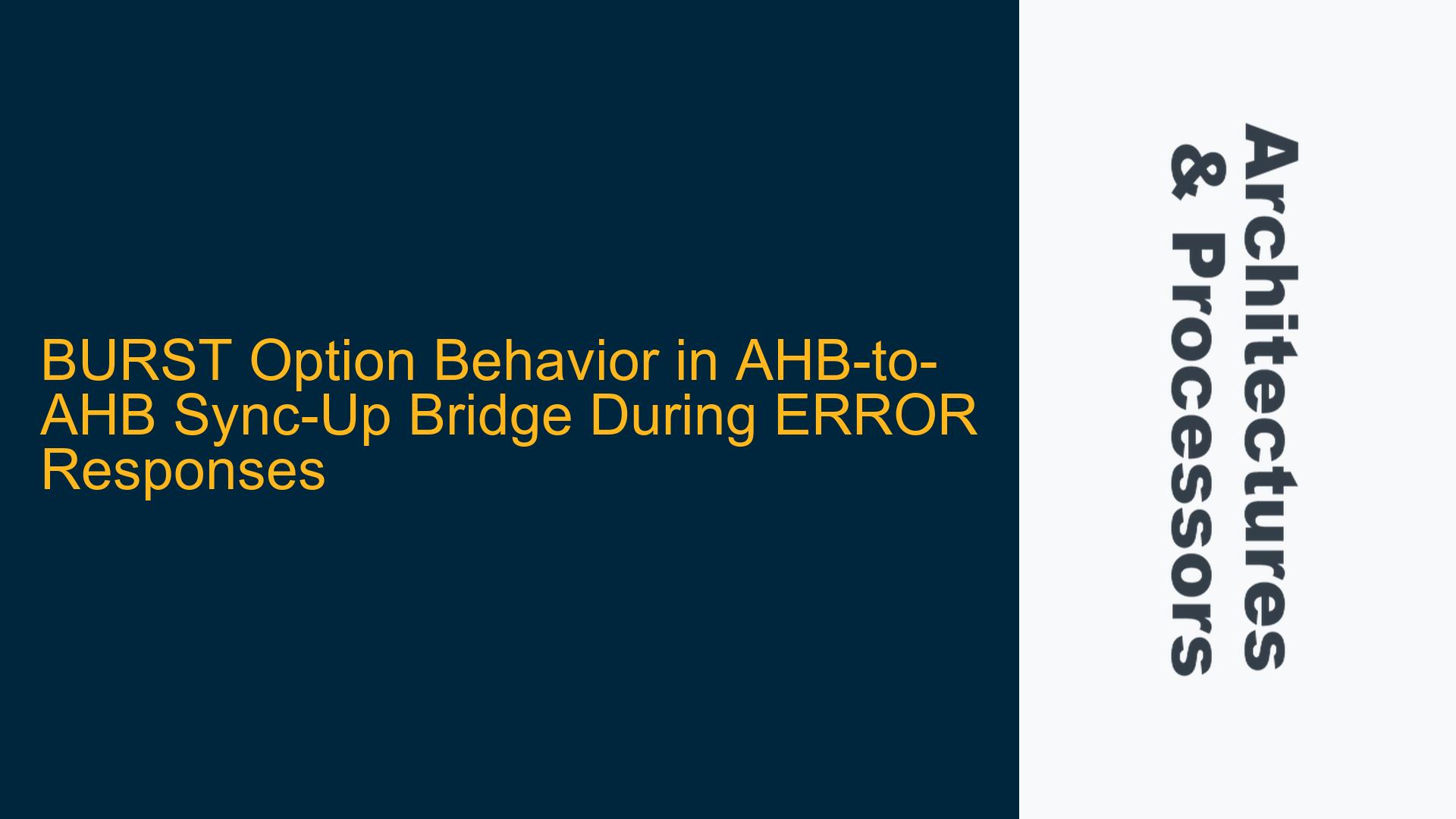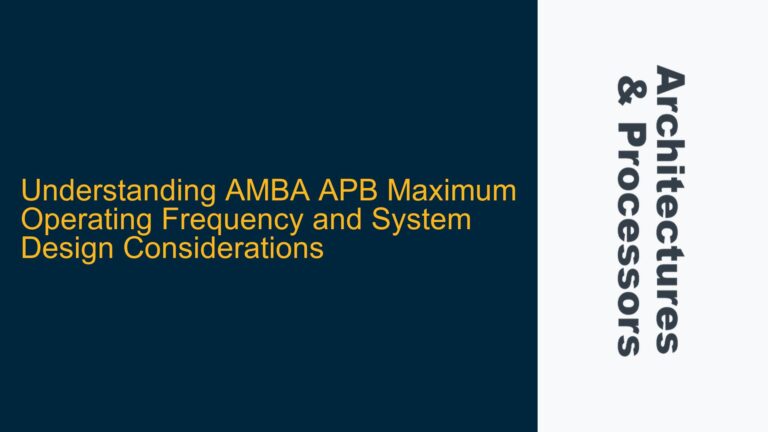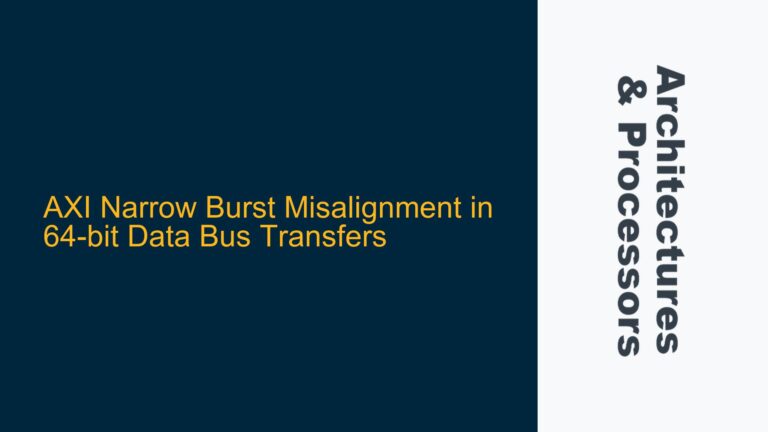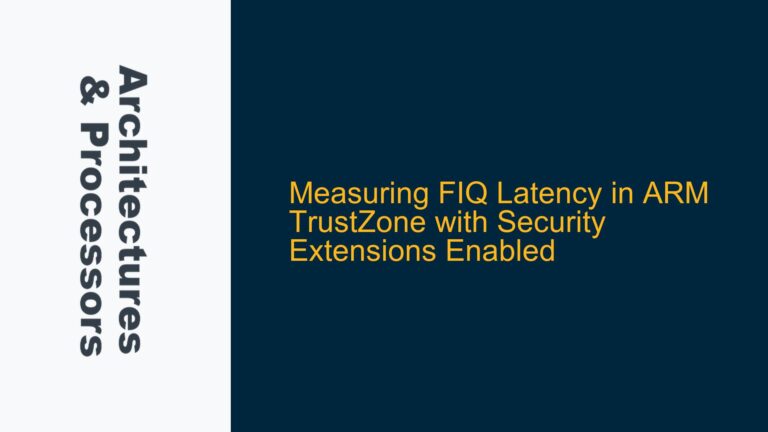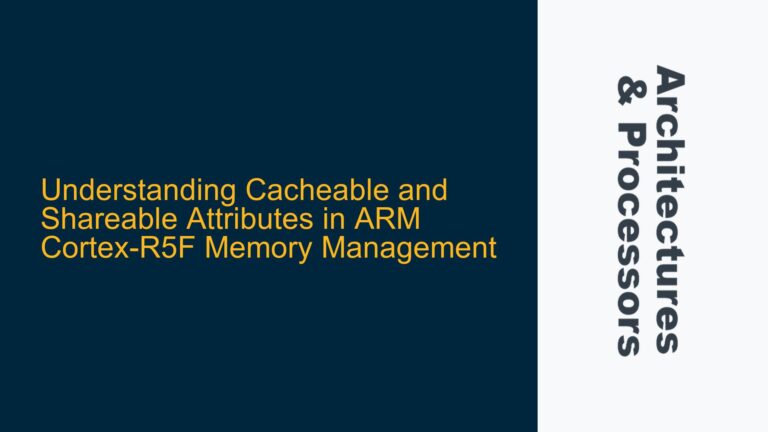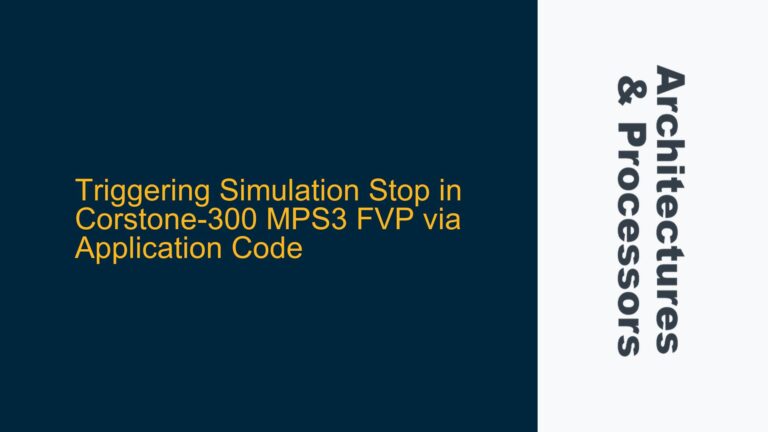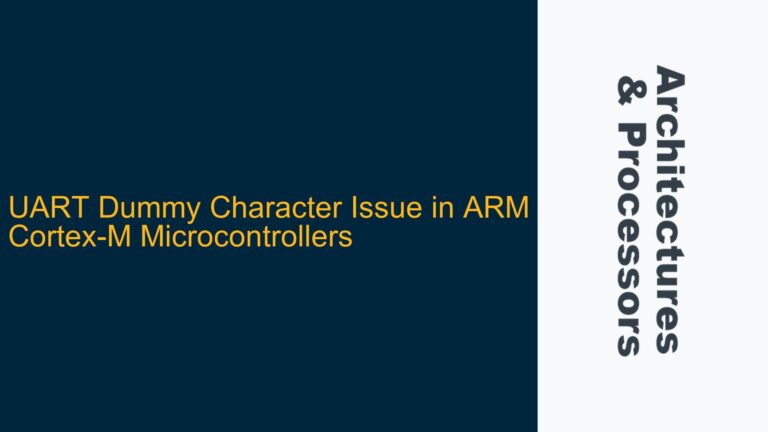AHB-to-AHB Sync-Up Bridge BURST Transfer Handling During ERROR Responses
The AHB-to-AHB sync-up bridge is a critical component in ARM-based systems, facilitating communication between two Advanced High-performance Bus (AHB) domains. One of its key features is the BURST transfer capability, which allows for efficient data movement by grouping multiple transactions into a single burst. However, a significant challenge arises when an ERROR response occurs during a BURST transfer. The bridge must handle this scenario correctly to ensure system stability and data integrity. The core issue lies in the bridge’s inability to predict whether the master will continue or cancel the remaining BURST transactions after an ERROR response. This uncertainty complicates the bridge’s decision-making process regarding the HTRANS signal, which indicates the type of transfer (IDLE, BUSY, NONSEQ, or SEQ) to the downstream AHB slave.
When an ERROR response occurs, the bridge faces a dilemma. If it drives the HTRANS signal to IDLE, it assumes the master will cancel the remaining BURST transactions. However, if the master decides to continue the BURST, this assumption leads to incorrect behavior. Conversely, if the bridge drives the HTRANS signal to BUSY, it assumes the master will continue the BURST, but if the master cancels the BURST, this also results in incorrect behavior. This ambiguity in handling ERROR responses during BURST transfers is the central issue that needs to be addressed.
Memory Protocol Violations and Bridge State Machine Limitations
The root cause of the issue lies in the inherent limitations of the AHB protocol and the bridge’s state machine design. The AHB protocol does not explicitly define how a master should behave after receiving an ERROR response during a BURST transfer. This lack of specification leaves room for interpretation, leading to potential mismatches between the master’s behavior and the bridge’s expectations. Additionally, the bridge’s state machine is designed to handle normal BURST transfers efficiently but lacks the flexibility to adapt to unpredictable master behavior during ERROR responses.
Another contributing factor is the bridge’s inability to infer the master’s intent from the ERROR response alone. The ERROR response only indicates that something went wrong with the current transaction, but it does not provide any information about the master’s subsequent actions. This lack of information forces the bridge to make assumptions, which can lead to protocol violations and system instability.
Furthermore, the bridge’s design may not account for all possible scenarios that can occur during an ERROR response. For example, the bridge might not have a mechanism to detect whether the master has actually canceled the BURST or is simply pausing before continuing. This oversight can result in the bridge making incorrect decisions about the HTRANS signal, further exacerbating the issue.
Implementing Robust ERROR Handling with Conditional HTRANS Signaling
To address the issue, the bridge’s state machine must be enhanced to handle ERROR responses more robustly. One approach is to implement a conditional HTRANS signaling mechanism that adapts to the master’s behavior dynamically. This mechanism would involve monitoring the master’s actions after an ERROR response and adjusting the HTRANS signal accordingly.
First, the bridge should be modified to detect whether the master has canceled the BURST or is continuing it. This can be achieved by adding a state in the bridge’s state machine that waits for additional signals from the master after an ERROR response. For example, if the master continues the BURST, it will issue a NONSEQ or SEQ transfer, which the bridge can detect and use to update its state. If the master cancels the BURST, it will issue an IDLE transfer, which the bridge can also detect and use to update its state.
Second, the bridge should be designed to handle the case where the master does not provide any additional signals after an ERROR response. In this scenario, the bridge should default to a safe state, such as driving the HTRANS signal to IDLE, to avoid protocol violations. However, this default behavior should be carefully considered to minimize the impact on system performance.
Third, the bridge should include additional error-checking mechanisms to ensure that it does not make incorrect assumptions about the master’s behavior. For example, the bridge could include a timeout mechanism that detects if the master has not issued any additional signals within a certain period after an ERROR response. If the timeout occurs, the bridge can assume that the master has canceled the BURST and update its state accordingly.
Finally, the bridge’s design should be thoroughly tested to ensure that it handles all possible scenarios correctly. This testing should include simulations of various ERROR response scenarios, including cases where the master continues the BURST, cancels the BURST, or does not provide any additional signals. The results of these tests should be used to refine the bridge’s state machine and ensure that it behaves correctly in all cases.
In conclusion, the issue of handling ERROR responses during BURST transfers in an AHB-to-AHB sync-up bridge is a complex problem that requires careful consideration of the AHB protocol, the bridge’s state machine design, and the master’s behavior. By implementing a robust ERROR handling mechanism with conditional HTRANS signaling, the bridge can be made more reliable and stable, ensuring correct operation in all scenarios.
